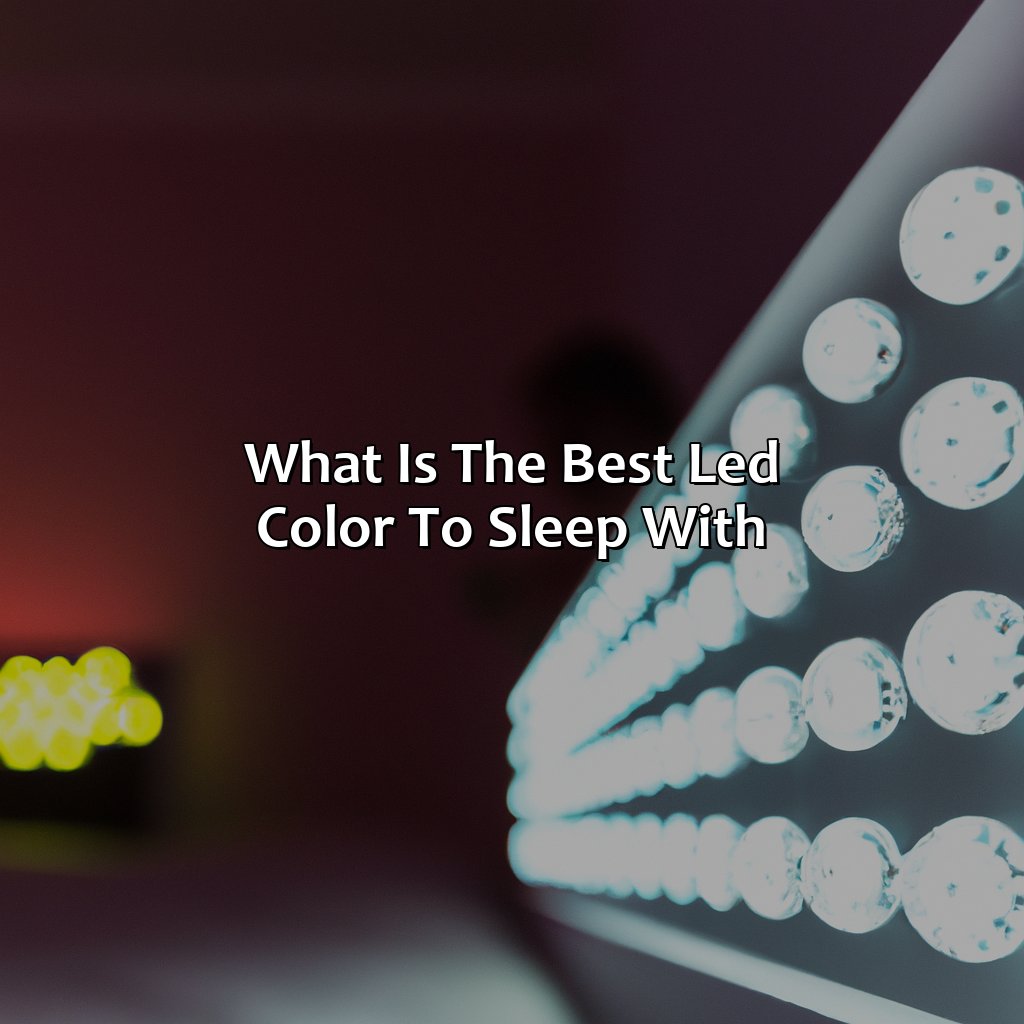Ever noticed how difficult it is to fall asleep after a late-night scroll on your phone? Or how a bright light in the morning instantly jolts you awake? The color of light isn’t just about aesthetics, it profoundly impacts our sleep-wake cycles. This subtle yet powerful influence is mediated by a specialized group of brain cells called “photoreceptors,” sensitive to the spectrum of light we encounter throughout the day.
Image: us.yeelight.com
The right light color can be your secret weapon for better sleep. Whether you’re trying to wind down before bed or wake up feeling refreshed, understanding how different light wavelengths affect your body is crucial. Let’s dive into the fascinating world of light color and its impact on our slumber.
Understanding the Basics: The Science of Light & Sleep
The Power of Light: How It Regulates Our Sleep-Wake Cycle
Our internal clock, known as the circadian rhythm, runs on an approximately 24-hour cycle, guiding our sleep-wake patterns. This rhythm is synchronized by our exposure to light and darkness. The most important light-sensitive cells in the eye are not the ones responsible for vision, but rather specialized photoreceptor cells called “melanopsin” cells.
These cells are particularly sensitive to blue light, which signals to the brain that it’s daytime. This tells the body to suppress melatonin, a hormone that promotes sleep. Conversely, as the sun sets and blue light exposure decreases, melatonin production increases, preparing us for sleep.
The Spectrum of Color: How Wavelengths Affect Sleep
Light is made up of different wavelengths, each corresponding to a specific color. The shorter the wavelength, the more energy it carries. Blue light, with its short wavelength, has high energy and is thus a potent sleep disruptor.
Longer wavelengths, like those in red light, carry less energy and are considered more sleep-friendly. This is why using red light bulbs in your bedroom or for bedtime reading could be a better choice than bright white or blue light.

Image: colorscombo.com
Optimizing Your Sleep: Choosing the Best Light Color
Before Bedtime: Minimize Blue Light Exposure
As sunset approaches, try dimming the lights and gradually shifting towards warmer, redder hues. Avoid screens, especially those emitting blue light, for at least an hour before bed. If you must use electronic devices, consider using blue light filtering glasses or software to minimize their disruptive effects.
Wake Up Time: Embrace the Power of Blue
Exposing yourself to bright blue light upon waking up can help reset your circadian rhythm, signaling to your body that it’s time to wake up. This can be achieved through natural sunlight, a light therapy box, or specially designed alarm clocks that mimic sunrise.
Light Color and Our Mood
Aside from its impact on sleep, light color can influence our emotions and mood. While blue light can be stimulating, red light has a calming effect. This is why red light therapy is used in some clinical settings to manage anxiety and depression.
Navigating the Market: Light Bulbs for Sleep
Many light bulbs on the market are designed specifically for sleep. These bulbs often use warm white light, eliminating the harsh blue tones of traditional incandescent bulbs. Look for bulbs with a low color temperature (measured in Kelvins), such as 2700K or 3000K, which provide a softer, warmer light that is more conducive to relaxation.
Tips for Choosing the Right Light Bulbs
- Consider your budget: Smart bulbs can be more expensive but offer more features, like dimming and color customization.
- Experiment with different color temperatures: What’s cozy and relaxing for one person might be too bright or too dim for another. Try out different light bulbs to see what works best for you.
The Future of Light and Sleep: Emerging Technologies
Ongoing research is exploring the use of light therapy not only for sleep disorders but also for various health conditions. For example, light therapy is being investigated as a potential treatment for seasonal affective disorder (SAD), a type of depression associated with changes in seasons.
Emerging technologies such as smart lighting systems allow for personalized light settings throughout the day, further optimizing light exposure for improved sleep and well-being.
What’S The Best Light Color For Sleeping
Conclusion: Embrace Light Color for Better Sleep
By understanding how different light colors affect our sleep-wake cycle, we can make simple, yet powerful, changes to our lighting environment to enhance our sleep quality. Experiment with different light sources and color temperatures to find what works for you. You might be surprised at how much an informed approach to light can improve your slumber and overall well-being.
Remember, your sleep is a vital investment in your health. By embracing the power of light, you can take control of your sleep quality and wake up feeling refreshed and energized.






